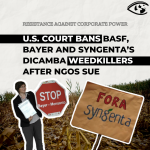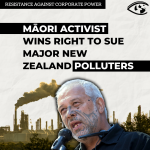US: For Tobacco, Stealth Marketing Is the Norm
Wednesday's announcement came as little surprise to tobacco companies and their opponents: cigarette sales had fallen once again, hitting a 55-year low.
Tobacco companies have been on the defensive since reaching a landmark $246 billion settlement with the states in 1998, and cigarette sales in the United States have declined more than 20 percent since then. In addition, many states and city governments have passed laws banning smoking in workplaces, restaurants and bars.
But tobacco companies, which are able to vastly outspend antitobacco groups, may still be winning the marketing wars. While tobacco companies have abandoned most conventional advertising, they are using other means to get their point across. Antismoking groups, on the other hand, are now struggling to find the money to maintain even a small-scale campaign.
According to the Federal Trade Commission, tobacco companies spent more than $15.1 billion in 2003 to market their product in the United States, up from $12.4 billion in 2002, despite the diminishing importance of the market.
International tobacco sales, for example, now represent 46 percent of total revenue for Altria, the parent company of Philip Morris U.S.A., while domestic tobacco sales are 19 percent. (The remainder is revenue from Kraft, which is also part of Altria.)
On the other side, the most visible antismoking group, the American Legacy Foundation, which came into being as a result of the settlement, has sharply cut its advertising budget. The foundation received financing from the initial tobacco settlement in 1998, getting up to $300 million a year from 1999 to 2003, and investing about 50 percent of the money. But now that the annual payments have ended, the foundation's budget is largely derived from the proceeds of those investments. It would not disclose its current budget.
"It truly is a David versus Goliath scenario," said Joseph Martyak, the executive vice president for marketing, communications and policy for the American Legacy Foundation. The foundation's marketing has centered on its Truth campaign, an effort created by Arnold Worldwide, a unit of Havas, and Crispin Porter & Bogusky, part of MDC Partners, that began in 2000 and has been credited with reducing teenage smoking. A report in the March 2005 issue of The American Journal of Public Health attributed 22 percent of the decline in youth smoking to the campaign.
Cigarette marketing, meanwhile, has largely gone under the radar. After the 1998 settlement, regulations were placed on tobacco advertising, limiting its reach in traditional media. Tobacco companies agreed to restrictions outlawing Joe Camel and other cartoon animals, banning outdoor advertisements everywhere and banning ads in magazines that are aimed at younger readers.
For its part, Philip Morris says it has not placed advertising in newspapers or magazines since 2004. Instead, tobacco companies have employed tactics like direct mail, coupon discounts and promotional efforts for its database of smokers.
"That's where we really do most of our communications," said Dana Bolden, a spokesman for Philip Morris USA.
In a speech to a marketing association in Albany last year, Pascal Fernandez, the vice president for brand management at Philip Morris USA, said customers could get clothes and shopping sprees by redeeming bar codes from cigarette packages.
Tobacco companies have also tried to woo customers with product options: in 2004, Philip Morris introduced the Marlboro Menthol 72, a shorter cigarette intended for a shorter smoking break, and it promotes its discount cigarettes like Basic for smokers who balk at higher prices.
Tobacco companies have also had to deal with laws restricting smoking in public places in some states. In New York, Mayor Michael R. Bloomberg recently proposed a 50-cent increase in the city's cigarette tax. The companies have responded by getting creative. In January, the R. J. Reynolds Tobacco Company opened the Marshall McGearty Tobacco Lounge in Chicago, just as a citywide ban on smoking took effect. The lounge, dedicated to cigarette smoking, says it is exempt from the law because it falls under the "tobacco retail store" category.
Antitobacco groups have also tried to sway public opinion by taking the issue to Hollywood. Stanton Glantz, an antitobacco researcher and professor at the University of California, San Francisco, has proposed an automatic R rating for movies that depict smoking, and in November, a group of attorneys general from 32 states asked major movie studios to insert public-service announcements on DVD's of movies that depict smoking.
Of course, smoking in Hollywood movies is far from extinct. Cigarettes made appearances in several of the films nominated for best picture at this year's Academy Awards, including "Brokeback Mountain," "Good Night, and Good Luck" and "Capote." (It's worth pointing out that none are set in the present day.)
But in "Thank You for Smoking," a satire about tobacco companies adapted from a 1994 novel by Christopher Buckley, there is no smoking at all. The movie is scheduled for release next Friday.
Mr. Buckley said Jason Reitman, the director, purposely omitted any smoking. "The movie, as he put it, is about other things," Mr. Buckley said in an e-mail message. "But it was very deliberate, and I think rather cool."
- 109 Tobacco



